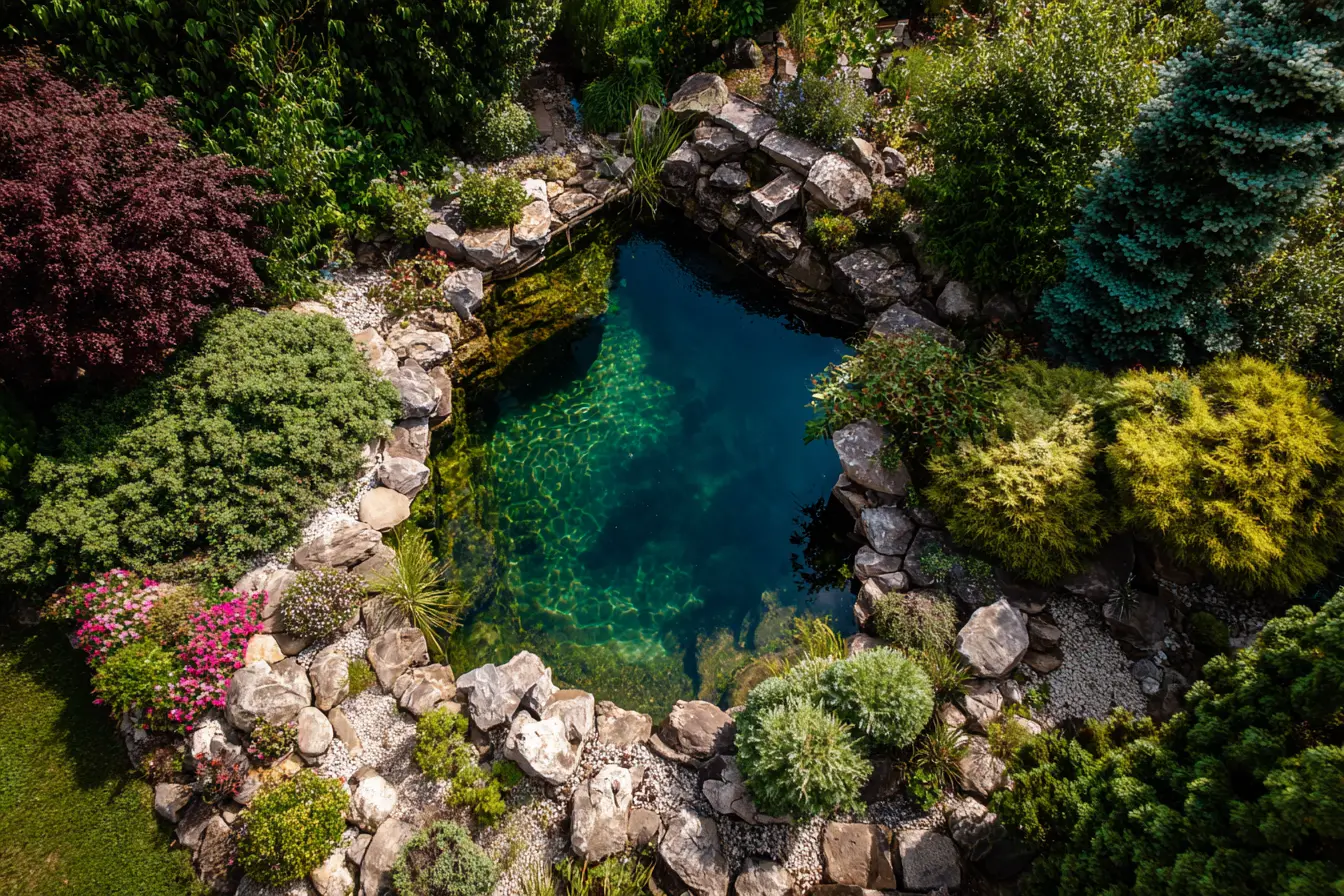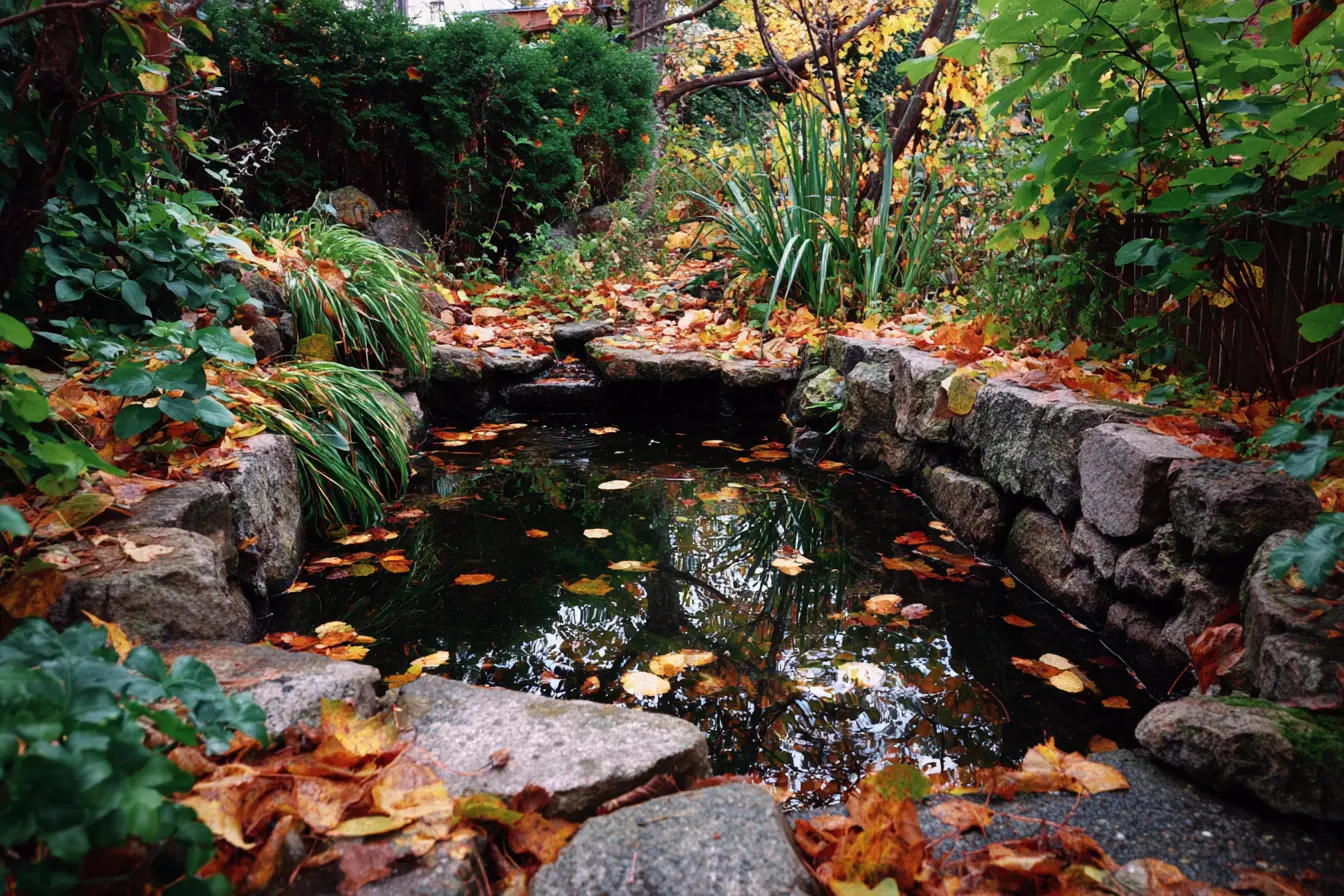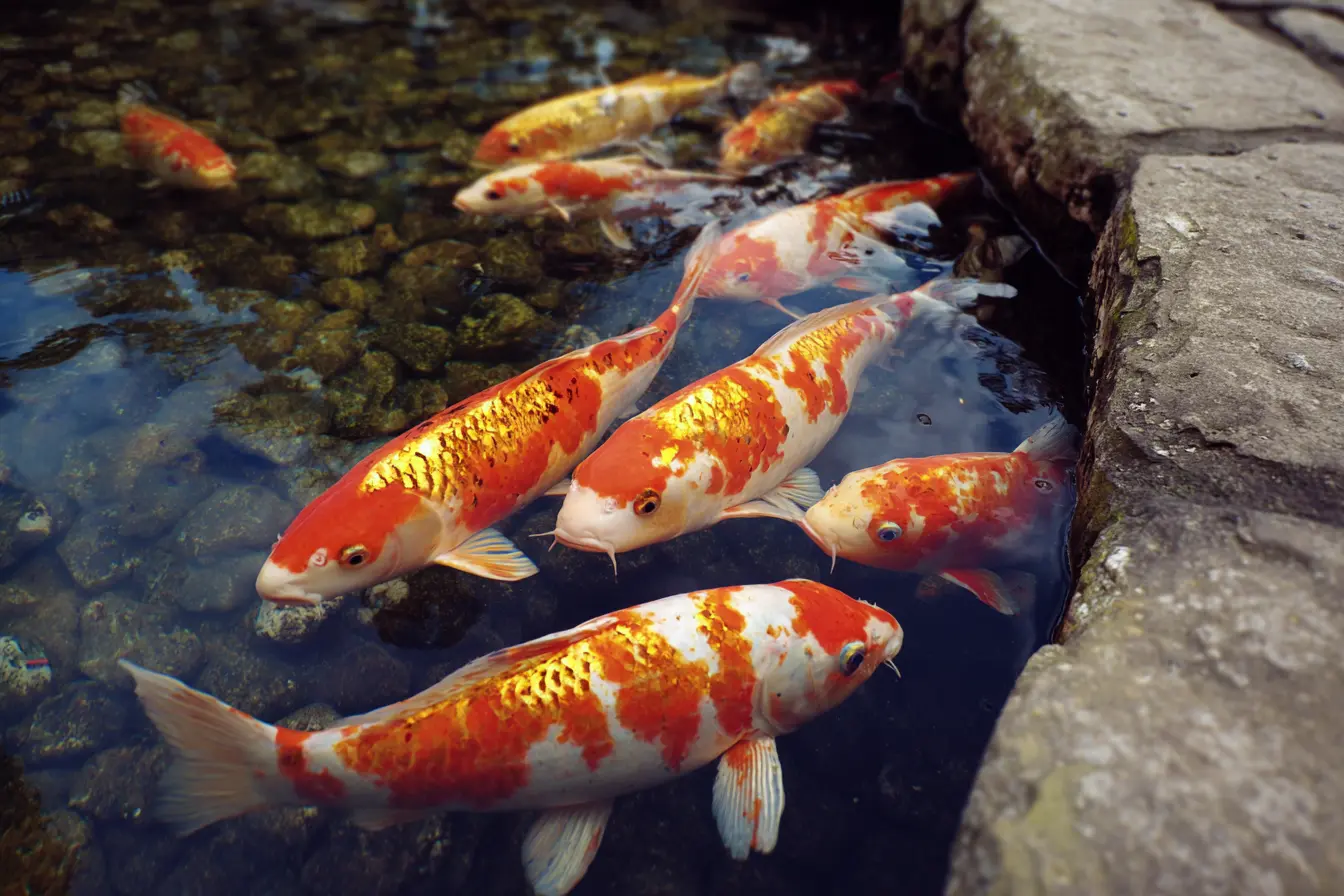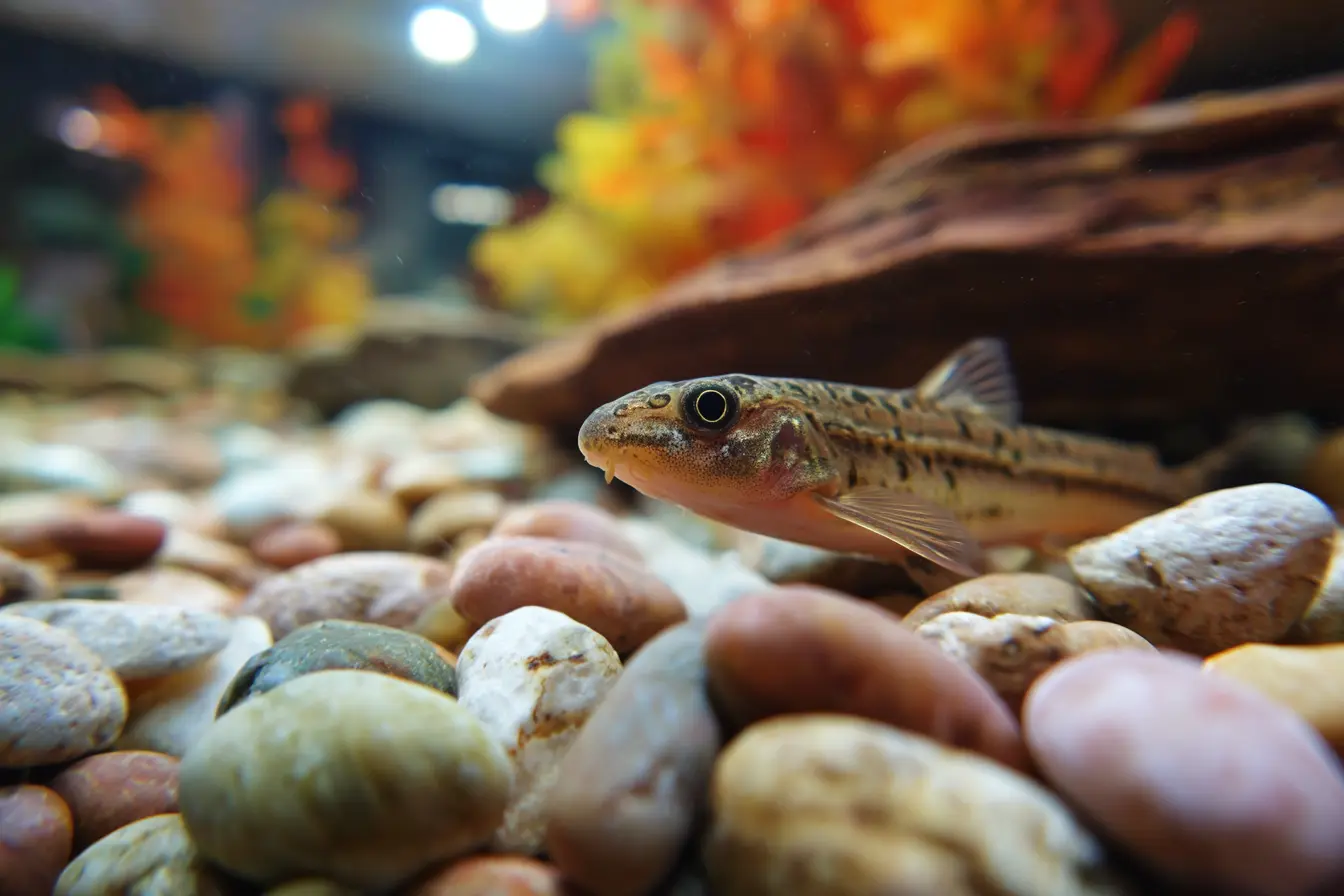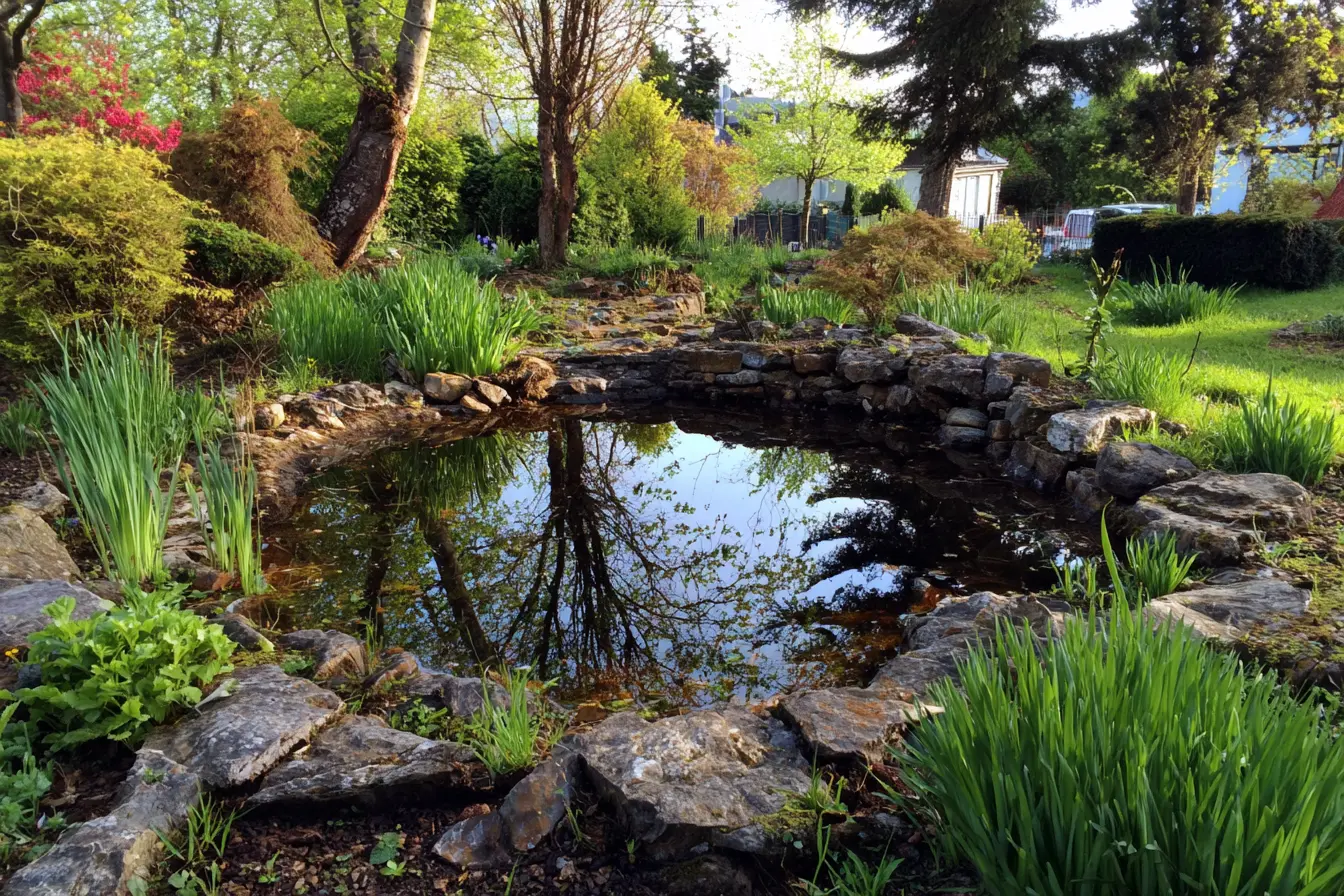
Spring Pond Maintenance and Fish Introduction: Your Complete Guide
Spring is a time of renewal, not just for your garden but for your pond too. As temperatures rise, your pond emerges from its winter dormancy, and your fish and plants start to flourish once more. Proper spring maintenance sets the stage for a healthy, balanced pond that will thrive through the warmer months. Here’s a comprehensive guide to everything you need to know.
Clean and Inspect Your Pond
Over the winter, leaves, twigs, and other debris can accumulate in your pond, particularly if you didn’t use a protective net in the autumn. This organic matter can break down and release harmful substances as it decomposes, leading to water quality issues.
Use a pond net or a pond vacuum to carefully remove debris from the surface and bottom of the pond. If your pond has a large amount of silt or sludge, consider using a pond sludge remover or carrying out a partial water change to help refresh the water quality.
While cleaning, take care not to disturb any overwintering wildlife. Frogs, newts, and other amphibians often shelter in the pond during winter, and sudden disruption can harm them.
Inspect the pond’s structure thoroughly. Look for:
- Cracks or tears in the pond liner, which can cause leaks
- Damage to any rockwork or edging
- Signs of erosion around the pond’s edge
Repair any damage now to prevent bigger problems later in the season.
Service Your Filtration and Pump Systems
Your pond’s filtration system is its lifeline, removing harmful waste and maintaining a healthy environment for fish and plants.
- Clean the filters and pumps: Remove any debris, algae, or silt that may have accumulated during winter. This helps the equipment work more efficiently.
- Check UV clarifiers: These devices control algae growth by sterilising free-floating algae spores. Clean or replace the UV bulb if it’s been in use for over a year, as the effectiveness diminishes with time.
- Inspect all equipment: Check for cracked hoses, damaged seals, and any other signs of wear. Replace parts as needed.
Restart the filtration system once the water temperature stabilises above 10°C. Beneficial bacteria in your filters will begin to wake up and multiply at these temperatures, breaking down waste and keeping ammonia and nitrite levels in check.
Test Water Quality and Adjust as Needed
Before introducing new fish or plants, it’s crucial to ensure your pond water is in good condition. Poor water quality can stress fish and encourage unwanted algae blooms.
Use a reliable pond test kit to check for:
- pH: Should be between 7.0 and 8.0. Large swings can be stressful for fish.
- Ammonia: Should be zero. Ammonia is toxic to fish and often builds up in newly stocked ponds or where there is decaying organic matter.
- Nitrite: Should also be zero. Like ammonia, nitrite can be harmful to fish.
- Nitrate: Ideally below 40 ppm. High levels can encourage algae growth.
If any readings are off, perform partial water changes, replacing around 10–20% of the water every few days until parameters stabilise. Always add a dechlorinator when using tap water, as chlorine and chloramine can harm fish and beneficial bacteria.
Introducing New Fish to Your Pond
Spring is a popular time to introduce new fish, as water temperatures are rising and fish metabolism increases. Consider hardy, colourful species that thrive in British ponds, such as:
- Goldfish: These classics are robust and well-suited to garden ponds.
- Sarasa Comets: Known for their striking red and white patterns, these fish bring vibrant colour.
- Shubunkins: Their calico colouration and lively behaviour make them a delightful addition.
Before adding new fish, it’s essential to quarantine them in a separate tank for a couple of weeks. This helps prevent introducing diseases or parasites to your established pond community.
When you’re ready to add them:
- Float the transport bag in the pond for 15 to 20 minutes to equalise the temperature.
- Open the bag and add a small amount of pond water every 5 minutes to help the fish adjust to pH and water chemistry.
- After 15 to 20 minutes, gently release the fish into the pond.
Introduce new fish gradually. Avoid adding a large number of fish at once, as this can overwhelm the pond’s filtration system and lead to dangerous ammonia spikes. Adding fish in small groups over a few weeks gives the beneficial bacteria in your filters time to adjust and grow.
Supporting Your Pond’s Ecosystem
A well-balanced pond is about more than just fish. Plants, bacteria, and invertebrates all play vital roles.
- Plant oxygenators: Hornwort, water milfoil, and other oxygenating plants help absorb excess nutrients and provide natural shelter for fish.
- Marginal plants: Varieties like water iris and marsh marigold not only look attractive but also support water quality.
- Floating plants: Water lilies and water lettuce offer shade, helping to control algae by limiting sunlight.
Adding plants now allows them to establish before summer’s peak growth, when they’ll be most effective at balancing your pond’s ecosystem.
Final Tips for a Healthy Pond
- Feed fish sparingly at first: As temperatures rise, fish become more active, but don’t overfeed. Uneaten food can decay and pollute the water.
- Maintain regular water testing: Even once fish are settled, keep monitoring water quality to catch any problems early.
- Keep an eye on algae: Spring is prime time for algae blooms. Use natural treatments or manual removal to control them.
Conclusion
Spring pond maintenance is all about setting the stage for a successful season. By taking the time to clean, inspect, and prepare your pond, you’re ensuring a beautiful and healthy environment for both your fish and the wider ecosystem. With a bit of effort and patience, you’ll create a pond that’s not only the focal point of your garden but a safe haven for all its aquatic inhabitants.
Vets near you
Speciality vets
- Aquatics vet specialists
- Birds vet specialists
- Camelids vet specialists
- Cats vet specialists
- Cattle vet specialists
- Deer vet specialists
- Dogs vet specialists
- Equines vet specialists
- Exotic vet specialists
- Goats vet specialists
- Pigs vet specialists
- Poultry vet specialists
- Sheep vet specialists
- Small Mammals vet specialists
- Wild vet specialists
